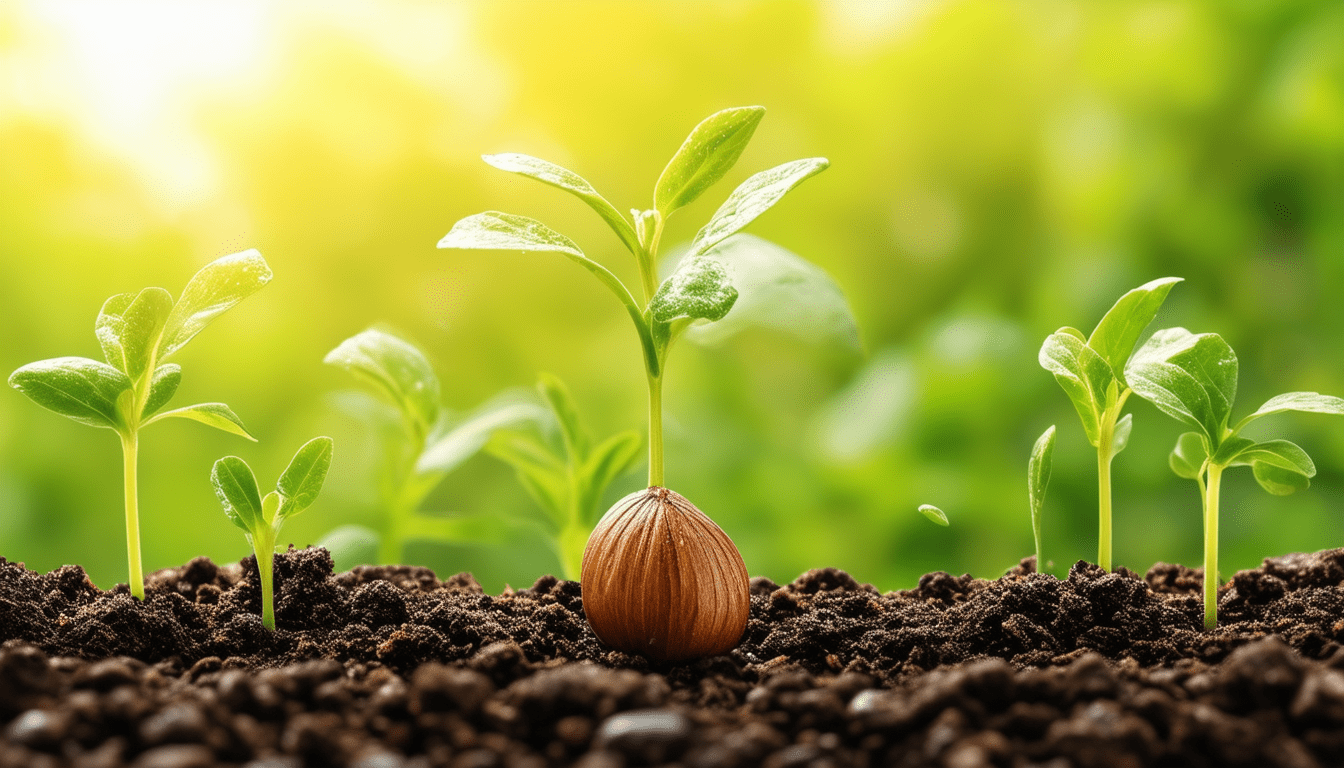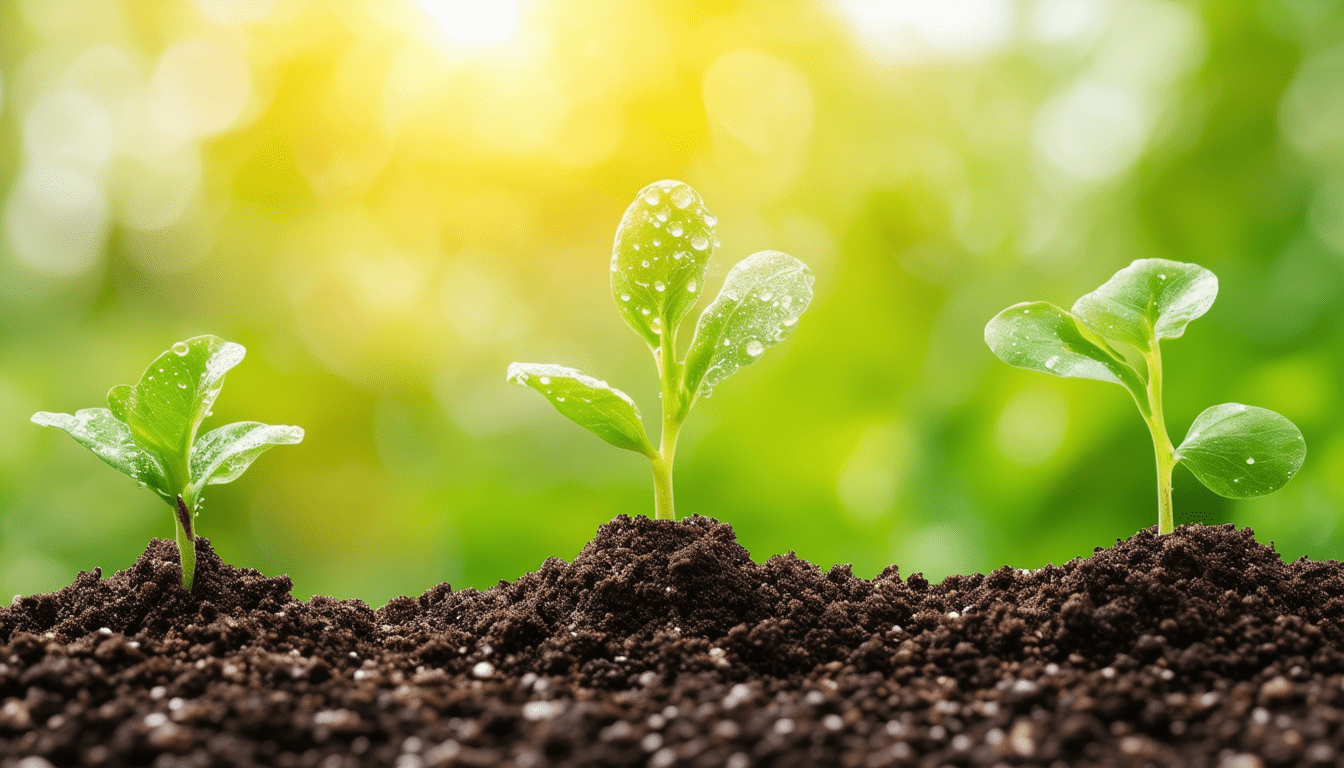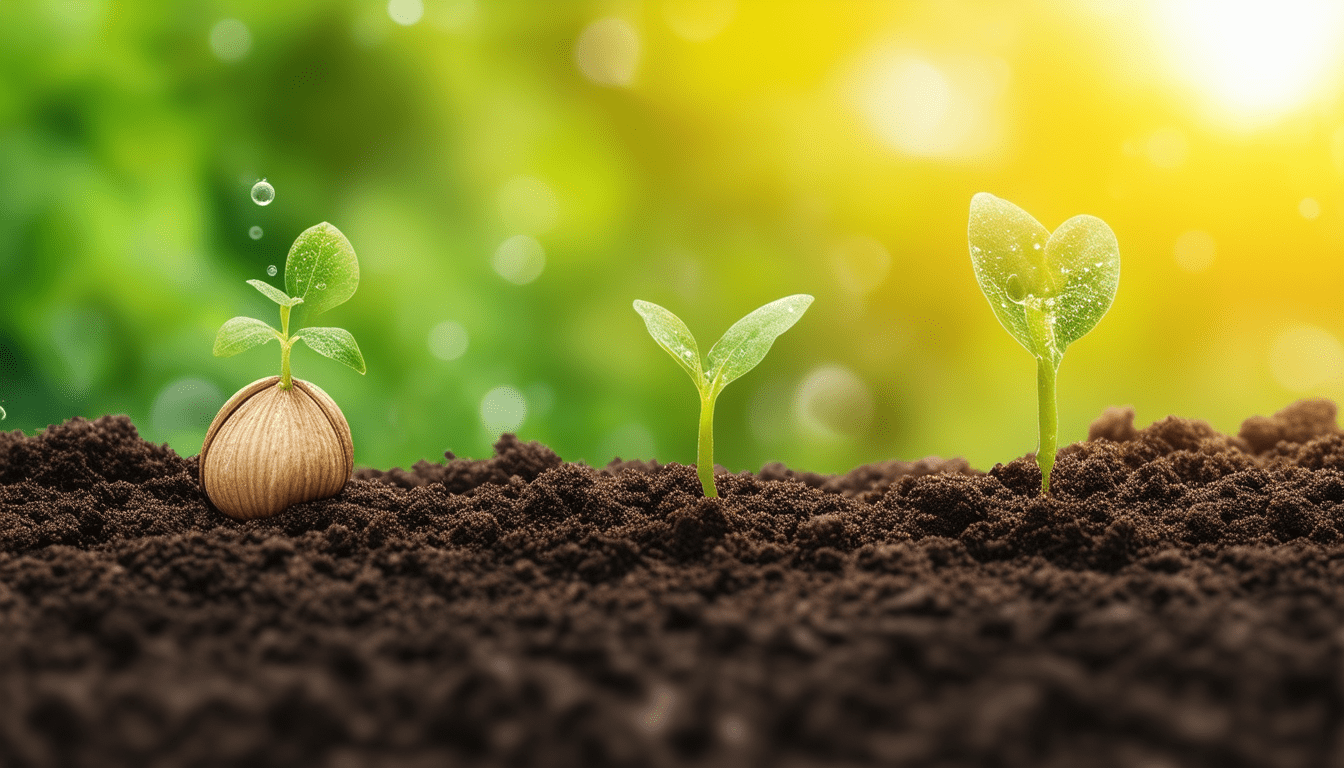Understanding the Germination Process: A Step-by-Step Guide
|
IN BRIEF
|
Germination is a fundamental process that marks the beginning of a plant’s life cycle, transforming a dormant seed into a vibrant seedling. This intricate journey involves various biochemical reactions triggered primarily by the absorption of water, allowing the seed to rehydrate and activate essential metabolic functions. Understanding the stages of germination not only highlights the miracle of plant development but also emphasizes the crucial conditions necessary for a seed to thrive, such as adequate moisture, temperature, and air supply. This step-by-step guide will explore the process of germination, detailing each phase to pave the way for successful plant growth.

Germination is a crucial process that occurs when a seed begins to sprout and ultimately develops into a new plant. This guide provides a thorough exploration of seed germination, offering insight into the factors necessary for successful germination, as well as a step-by-step approach to facilitate this natural process. Understanding the intricacies of germination is essential for anyone looking to cultivate plants effectively, whether for personal enjoyment or agricultural endeavors.
The Importance of Germination
Germination is the fundamental process through which a new plant emerges from a seed. The success of germination directly influences the growth and yield of plants. Factors such as water, oxygen, temperature, and even the type of soil play a pivotal role in determining whether the seed will sprout. Without sufficient understanding of these conditions, attempts to grow plants can be thwarted by low germination rates.
The Four Stages of Germination
The germination process can be divided into four distinct stages: imbibition, activation, growth, and emergence. Initially, during imbibition, seeds absorb water, swelling and initiating metabolic activity. Following this is activation, where biochemical processes kick into gear, allowing the seed to prepare for growth. This culminates in the growth phase, where the seedling develops, and finally the emergence, where it breaks through the surface, signaling the successful start of a new plant.
Preparatory Steps for Germination
Before embarking on the germination journey, it is critical to prepare effectively. These preparatory steps include selecting quality seeds and ensuring that the growing medium—whether it’s a specialized seed-starting soil mix or another suitable option—provides adequate drainage and nutrients. Moistening the soil to a damp consistency prevents the seeds from being overwhelmed by excess water.
Choosing the Right Conditions
In order for germination to occur, seeds must be placed in conditions that support their specific needs. Adequate light, temperature, and humidity are essential. Each seed type has varying requirements for these conditions, so researching the specific needs of the seeds being germinated is crucial. For comprehensive assistance, resources such as Study.com offer in-depth discussions on factors influencing germination.
The Seed Germination Process
The actual process of seed germination unfolds in a series of sequential steps. These steps generally include: preparing the soil, planting the seeds, ensuring sufficient moisture, providing the necessary warmth, and finally covering the seeds to maintain humidity. For further guidance on these steps, consider referencing the detailed instructions provided by Gardeners Basics.
Monitoring Germination
Once the seeds are planted, ongoing monitoring becomes vital. Observers should ensure that the soil remains moist but not overly saturated, which can lead to seed rot. Regularly checking for signs of sprouting and adjusting the environment as necessary can enhance the chances of successful germination. Resources available at Britannica can provide valuable tips on safeguarding seed expectation.
Common Issues in Germination
Despite careful preparation, several issues may arise during the germination process. Problems may include inadequate moisture levels, poor light conditions, or using seeds that have lost viability over time. Recognizing and addressing these potential hurdles swiftly can prevent the frustration of failed germination attempts.
Understanding the germination process is crucial for successful plant cultivation. By following this step-by-step guide and utilizing valuable resources, anyone can improve their seed germination techniques, ultimately leading to healthy and vibrant plants. For those specifically interested in cultivating cannabis, visiting sites like Cannabis Daily News can enlighten growers about unique germination methods tailored to cannabis seeds.
| Step | Description |
| 1. Water Absorption | Absorption of water initiates the germination process. |
| 2. Imbibition | The seed swells as it takes up water, stimulating growth. |
| 3. Respiration | Increased oxygen uptake enhances metabolic activity. |
| 4. Cell Division | Cells begin to divide, forming the root and shoot structures. |
| 5. Seedling Emergence | The seedling pushes through the soil, seeking sunlight. |
| 6. Root Development | Roots anchor the plant and absorb nutrients and water. |
| 7. Leaf Formation | Leaves develop to initiate photosynthesis for energy. |

The germination process is essential for plant growth, transforming dormant seeds into lively plants. This guide provides an overview of the germination stages, offering insights into what seeds need to thrive, and outlines simple steps for beginners to successfully germinate seeds.
What is Germination?
Germination refers to the sequence of events that a seed undergoes to develop into a seedling. This process begins when favorable environmental conditions, such as water, temperature, and oxygen, are met. The seed absorbs water, leading to crucial biochemical changes that kickstart growth. This transformative phase is vital for the formation of a new plant.
The Step-by-Step Process of Germination
Understanding the step-by-step process of germination is fundamental for anyone interested in gardening or agricultural practices. The typical stages include:
Step 1: Seed Imbibition
Water plays a pivotal role in germination. When seeds are exposed to moisture, they begin to absorb water in a process called imbibition. This initial stage is crucial as it leads to rehydration and expansion of the seed cells, thereby preparing the embryo for growth.
Step 2: Activation of Metabolism
Once imbibition occurs, the seed’s metabolism is activated. This leads to biochemical reactions that produce proteins and enzymes essential for growth. These actions are vital for the seed to convert stored nutrients into energy for the developing plant.
Step 3: Growth of the Embryo
Following the metabolic activation, the seed embryo starts to grow. This growth can be visualized within the seed as it begins to develop into a sprout. The embryo develops into different parts of the plant, such as the cotyledons, which are the first leaves that emerge.
Step 4: Seedling Emergence
The final stage in the germination process is when the seedling emerges from the soil. This is the moment when the seed transforms into a visible plant, pushing through the soil and reaching for sunlight. Continual access to water and nutrients during this stage is crucial for successful seedling development.
Factors That Affect Germination
Several factors can impact the germination process. These include:
Water Availability
Water is arguably the most critical factor. Without adequate moisture, seeds cannot absorb the necessary nutrients nor initiate the germination process. It is essential to provide the right amount of water for the seeds, avoiding both dryness and waterlogging.
Temperature
The temperature of the environment plays a significant role in germination. Generally, seeds germinate best within a specific temperature range that varies by species. Too cold or too hot of conditions can hinder the process or even prevent it entirely.
Oxygen Supply
Oxygen is necessary for seeds to undergo cellular respiration. A well-aerated medium allows for efficient gas exchange, supporting the seed’s metabolic activities. Lack of oxygen can limit growth and result in seed death.
Getting Started with Germination
For those eager to begin germinating seeds, here is a simple outline to follow:
- Prepare seed-starting soil mix.
- Moisten the soil, ensuring it is damp, not waterlogged.
- Plant the seeds according to package instructions.
- Cover the seeds lightly with soil.
- Maintain warmth and humidity by using a plastic cover.
For more detailed guidance on seed starting, visit resources that provide comprehensive instructions and insights, such as Seed Starting Basics.
- Step 1: Prepare the seed-starting soil mix.
- Step 2: Ensure seeds are placed properly, either in soil or on a wet paper towel.
- Step 3: Maintain humidity by covering the seeds with a plastic bag or lid.
- Step 4: Monitor temperature and light conditions for optimal growth.
- Step 5: Water the seeds gently, ensuring the soil is damp but not soaking.
- Step 6: Wait for seed soaking and cell expansion to initiate sprouting.
- Step 7: Observe the emergence of seedlings as they push through the soil.
- Step 8: Provide necessary nutrients and care as seedlings develop.

Understanding the Germination Process
Germination is a fascinating biological process where a seed transforms into a new plant. This transformation requires specific conditions to initiate, including the right amount of water, temperature, and oxygen. By understanding this procedure in detail, gardeners and plant enthusiasts can effectively stimulate successful sprouting, nurturing their seeds into thriving plants. This guide will take you through the essential steps of the germination process, highlighting its various stages and the factors that contribute to successful seed growth.
What is Germination?
Germination is the process where a seed absorbs moisture, swells, and eventually breaks through the seed coat to emerge as a seedling. This complex series of events is essential for plant reproduction and growth, and it relies on several environmental conditions. The initial stage of germination begins when the seed is planted in soil or another medium that retains moisture.
Step 1: Imbibition of Water
The first step in the germination process is imbibition, where the seed absorbs water. This absorption causes the seed to swell, rupturing the seed coat, which is crucial for the activation of internal processes. During this stage, enzymes get activated, preparing the seed for further development. It is important to provide adequate moisture, but too much can lead to rot.
Step 2: Activation of Metabolism
As the seed continues to absorb water, its metabolic activities commence. The stored nutrients begin to get utilized for growth, particularly starches that are converted into glucose for energy. This phase is vital since the seed needs enough energy to push its way through the soil and develop its initial roots and shoots.
Step 3: Emergence of the Seedling
Following the metabolic activation, the seed will begin to sprout. The first root, or radicle, pushes downward into the soil, anchoring the young plant and absorbing further moisture and nutrients. Simultaneously, the shoot develops upward, signaling the start of the plant’s growth above ground. Here, attention to adequate light and warmth becomes essential because photosynthesis will be required as the plant matures.
Factors Affecting Germination
Several factors can influence the germination rate and success of seeds. Understanding these elements can significantly increase the chances of successful seed sprouting.
Water Availability
Water is critical for germination. A balanced moisture level is necessary for the seeds to imbibe water without being waterlogged. Too little moisture can stall the germination process, while excess water can lead to fungal diseases or rot.
Temperature
The temperature of the environment also plays a crucial role in germination. Most seeds require a moderate temperature to initiate the germination process. Too cold temperatures can delay germination, while excessive heat can negatively impact seed viability.
Light Requirements
Some seeds require light to germinate, while others may need darkness. Understanding the specific light conditions beneficial for each seed type is essential to promote effective germination.
Grasping the germination process is indispensable for anyone interested in gardening or botany. By recognizing the steps involved and the critical factors that influence growth, whether you’re a novice or an experienced gardener, you can maximize your success in transforming seeds into healthy plants.


Post Comment